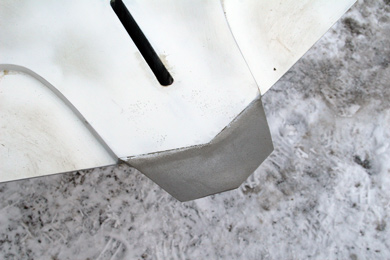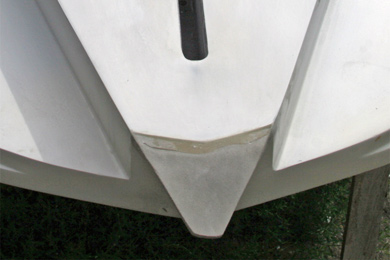|
Flaps. |
|
|
Ken Winner – the "inventor" of wide boards - had a rule of thumb for the minimum distance from the trailing edge of the fin and the stern of the board to minimize the risk for "ventilating" the fin, namely 3" (approx. 7.5 cm). When Winner (trying to trim the board) wanted the fin closer to the stern, he glued on a flexible flap, and in this way he (and his partner) hindered air from being pulled down the low pressure side of the fin - and consequently avoided spin out.
On modern formula boards there aren't mounted a flap from the start, but even if the distance between the stern and the fin mostly exceed the 7.5 cm, some sailors still prefer a flap on their formula board. Most of them install it because ...
Theoretically a flap (easy to make from a fin cover and glue to the board with epoxy) marginally increase the the resistance of the board in the water - and the thing to think about is, if you want to pay this price to have some of the mentioned benefits. |
|
 |
A Starboard 158 with a flap. |
 |
A F2 FX 100 IV with a flap. The F2 IV is born with adjustable plates in the cut outs with the purpose to hinder the board in flying out of the water - a problem a flap is possibly better to solve. |